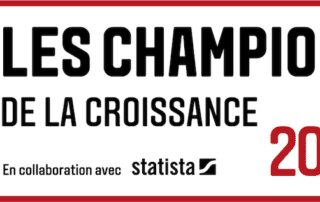Data sharing launched by Open Banking encourages banks, neo-banks and fintechs to develop new financial services. Via APIs (Application Programming Interface) or the creation of digital tools, all are on the way to change. However, it is important to take the right turn and avoid deviations.
What is Open Banking? Definition and examples
Implemented in 2018 following the 2013 PSD2 directive, open banking requires financial institutions to open their data to third-party banking services or players. Directly affected are fintechs, app services and API developers. In the wake of Open Innovation, Open Banking ensures better transparency of banking data, but also, and to a certain extent, of customer data.
Each customer can retrieve general information, such as branch location, and observe his account movements from his bank's application or a third-party application.
Open Banking has turned the market upside down: fintechs such as Lydia (payment service) or Bankin' (multi-account management) are enjoying great success, while banks are offering applications for monitoring one's stock portfolio (LCL) or managing one's employee savings (BNP Paribas).
Find out what an API is, and take a look at the 4 essential steps to choosing and implementing an API.
An opportunity for new services for traditional banks
Open Banking allows banks to offer new financial services and, by butterfly effect, to open the way to the creation of new offers. Julien Maldonato, director of the financial industry at Deloitte, takes the concept even further: "This open banking approach will push institutions towards extra-financial services. This is what we call 'beyond banking'. In this logic, it's not about helping the individual only when he or she needs a financial service, but positioning themselves upstream and downstream of that need."
Let's take the real estate transaction: with its new services, the bank could be more than a credit institution. The banking agent would advise his clients on their life choices: renting or buying, help in the real estate search, accompaniment during the move and support for the fitting out of the premises. By combining the services of the bank and other professionals, the banking institution would be at the center of this life moment.
This theory can be replicated at many levels: purchases (of a kitchen or a car for example), family evolution (via insurance or savings portfolios), changes in professional life...
A context for the emergence of fintechs
Thanks to open data, fintechs have the freedom to develop and market their novel solutions. Proof by 4:
German solution solarisBank raised $118 million in 2019. Its strategy? Enable banks to offer personalized services on demand. Said services cover a wide range: from payment services for marketplaces to account creation to transactions.
On the other side of the Channel, Rails Bank presents itself as a BaaP (Banking as a Platform) that connects a network of small and medium-sized banks and fintechs via an API. Its API can contain multi-product transactions, benefit/risk monitoring for each transaction and more. Here are a few rules to follow when it comes to APIsation.
For its part, TrueLayer is developing a banking application that marries both mainstream services and cryptocurrency management. The service is very broadly interested in insurance, investment services or C2C marketplaces.
The retail depository spearheads Deposit Solutions, another German innovation. Its open architecture allows banks to repatriate their retail deposits from all over Europe into their own accounts without multiplying contracts with various European banks.
The risks of Open Banking
Whoever wants to open up personal data fears for their security. Fortunately, the ground has been laid down by law. And its concrete application can count on the blockchain. Means and discourse are aligning to make Open Banking a reality in 2022.
The opening of services and supports requires total fluidity for a good customer experience. Nouamane Cherkaoui, CIO of the FAP at Franfinance, confirms: "The challenge is to offer a simple and seamless integration, that is to say, one capable of ensuring a fluid and frictionless customer experience for consumers with a cross-channel journey. Without a modern and simple interface, users will not engage with the application or service.
Thanks to APIs, traditional banks no longer face a technology gap, they are able to develop and integrate services easily. It is now up to them to overcome the historical data silos to take advantage of this.
On the same subject :






